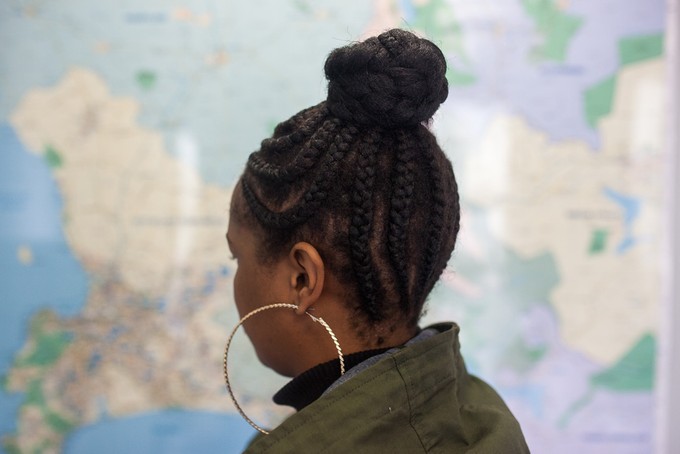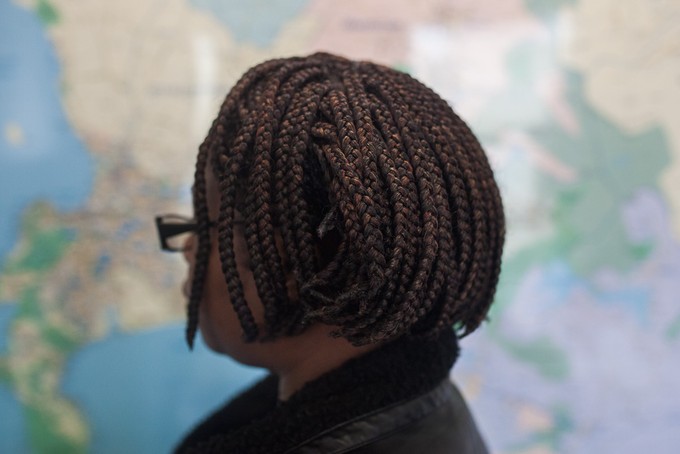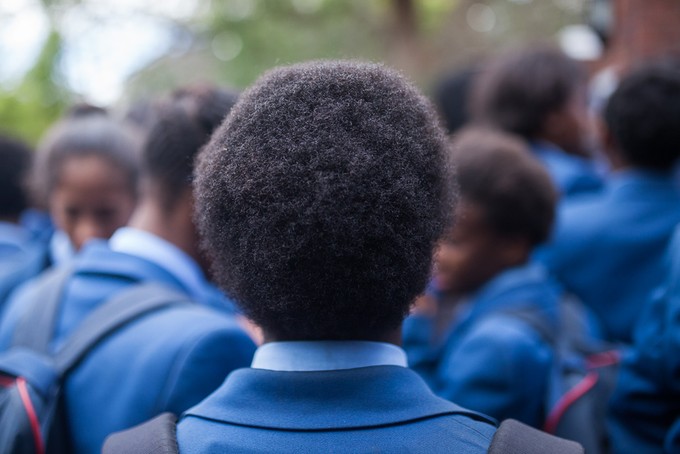The economics of African women’s hair
School protests for rule changes are not only about race and identity
Photo: Ashraf Hendricks
There are many problems plaguing South African schools. In August, learners in King William’s Town fed up with a shortage of teachers, poor infrastructure and a lack of water demanded the resignation of the province’s education minister. Equal Education has for years been putting pressure on the education department to put libraries in schools and provide decent infrastructure.
As a disturbing article published by a teacher at a township school shows, the poor quality of teaching is perhaps the most serious problem most kids have to deal with.
So why the protests about hair, a seemingly superficial problem that received the media limelight when relatively well-heeled students at Pretoria High School for Girls and Sans Souci began protesting? Is the brouhaha just a middle-class affectation, diverting attention from more important problems with the education system?
Well besides the problems of identity and dignity described in Black hair hierarchy is a metaphor for life, protests by students at Thandokhulu High School over the past two days show that economics is a key part of the protests. Put starkly, it is both expensive and time-consuming for most African women to maintain their hair.
Thandokhulu is located in Mowbray, a nice Cape Town suburb not far from the city. But the school population consists entirely of township kids whose parents are mostly poor, but just well-off enough to afford the low fees (less than R1,000 per year) the school charges. With the promise of a slightly better education than most township schools and the relative safety of Mowbray, it’s an attractive option for working-class families.
The school’s grade 10 girls are demanding a change in the rules so that they can wear braids, dreadlocks and twists. The reasons stated in their memo are to do with finances and time, not identity. Exactly what the school rules allow isn’t clear to us, but as with most schools the aim appears to be to encourage neat, plain hairstyles. The problem is that for most African girls neat and plain is expensive and takes hours.
Here are some of their options:
Natural relaxed hair: It isn’t easy to maintain natural African hair. Afros become coarse, knotted and thick. To alleviate this, women have to use relaxers, a cream applied once or twice a month. The cost is about R100 per time, depending on the cream used. It takes about an hour. They also have to apply moisturiser daily which takes a few minutes, and costs about R70 to R100 per month. Besides this, the hair needs to be shampooed and dried at the salon (it is difficult to do well at home). This can cost R60 per week.
Straight-back or cornrows: This is the most popular and one of the easiest options. It’s neat, fashionable and encouraged by schools. The problem is that you have to do it twice a month. It takes 45 minutes to an hour to do, depending on the person doing it. It costs R150 to R200 per time. It costs more if you have to buy synthetic hair.

Braiding or twisting: This is what the Thandokhulo students want. And the reason is that it lasts about two months. It costs about R350 to R450. If you have to buy hair it’s more. It takes hours each time to do. It can even take two days. But for many girls it’s an easier option than straight-back or cornrows and no more expensive.

Dreadlocks: This too is a natural hair option but it is expensive and time-consuming to maintain. In contrast to relaxed hair, this is very difficult for a person to do herself. It takes hours and costs several hundred rand when initially done. Women also have to go to the salon regularly for washing, an additional cost. Retouching every month costs about R200.
For most Thandokhulo girls, the cost of maintaining their hair far exceeds the annual school fees.
There are numerous other fashions. And it is possible to quibble with the costs and the time estimates we have provided. Also, everyone is different, and we’ve made a fair number of generalisations in our descriptions. Nevertheless, the point is that for most African schoolgirls hair isn’t a trivial matter: it consumes time and money.
Next: Rubbish piling up in Nelson Mandela Bay
Previous: Thandokhulu High School students protest about hair rules
© 2016 GroundUp. 
This article is licensed under a Creative Commons Attribution-NoDerivatives 4.0 International License.
You may republish this article, so long as you credit the authors and GroundUp, and do not change the text. Please include a link back to the original article.



